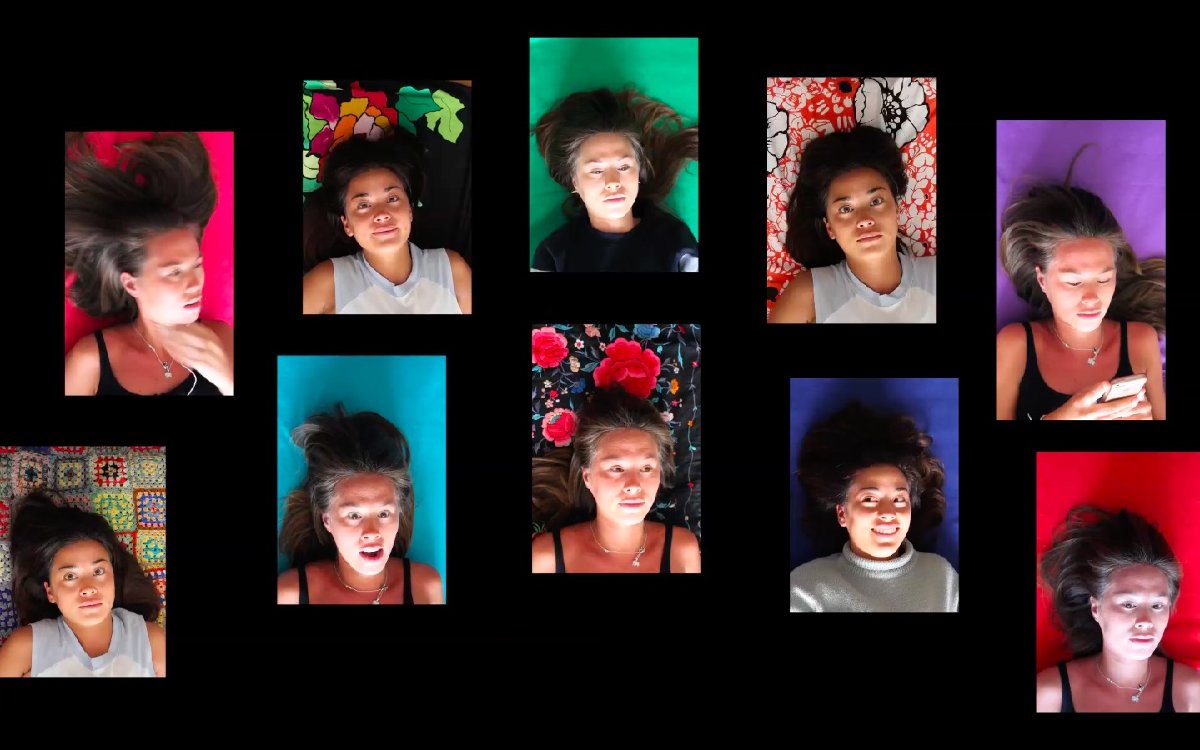
Tyler Woolcott on Lynn Dennisons work at the Florence Trust.
In the artist Lynn Dennison’s new work "Imagine" for the Summer Show at The Florence Trust, Dennison explores the themes of catharsis, nature, memory and desire. Using a single projection composed of multiple frames playing in parallel, a series of young women's heads, lying on coloured fabrics, are listening with headphones to a mindfulness recording, being guided through an imaginary forest. The artist’s two daughters, and their friends, are replicated to create the series of disembodied heads. Each video fragment captures different subtle twitches and shifting facial expressions responding to the nature mediation, which is narrated by the artist herself. The daughters appear uncanny: at once beatific and distracted, but also like moribund statues, at times motionless like a still life, with shadows, chiaroscuro and harsh light washing out their faces.
Visitors are invited to recline in one of the accompanying beanbag chairs to listen to the same mindfulness recording. By engaging with the work, the viewer becomes part of the overall composition, and the audio recording offers a secular take on a religious sermon which also evokes the church’s previous function. Turning around to face the church's former congregational space, the intimate personal experience of listening with headphones to the mindfulness drill mimics a religious devotees’ practice of communion with God. The array of monochrome colours, upon which each head rests in the projection, loosely correspond to the stained-glass figures of Jesus Christ surrounded by angels in the historic window panels.
Inanimate objects come to life in Dennison’s haunting video projections. The artist’s previous works include videos in which the winding steps of the staircase in the De La Warr Pavilion in Bexhill-on-Sea are transformed into a cascading waterfall; the historic clock tower in Birmingham city appears to tick backwards into the past; and the windows of an old seaside house are flooded by the waves on the shores below, accompanied by the vacant drawl of the shipping forecast filling the room’s interior.
For her Winter Open show at The Florence Trust, the church’s arch seemed to disappear to reveal the clear blue sky above, with the peaceful, fresco-like scene periodically broken apart by the roar of RAF fighter jets scrambling overhead. Dennison's process of layering memory and the subconscious onto objects is reminiscent of the artist Tony Oursler, who uses similar technologies as a means to re-enchant the world.
The motif of broken tranquillity and decay in Dennison’s work is reminiscent of the writhing insect carnage happening in the garden beneath the idyllic white picket fence in the opening scene of David Lynch’s film "Blue Velvet," 1986. In the end, nature always wins; human flesh is only temporary. Quoting the artist Vito Acconci, Dennison declares that: “Architecture exists because nature is dangerous.” Journeying into this void of pending loss and the reincarnation of objects, Dennison’s work reveals the hidden spirit in things always fraught in the realisation they will succumb to dust.